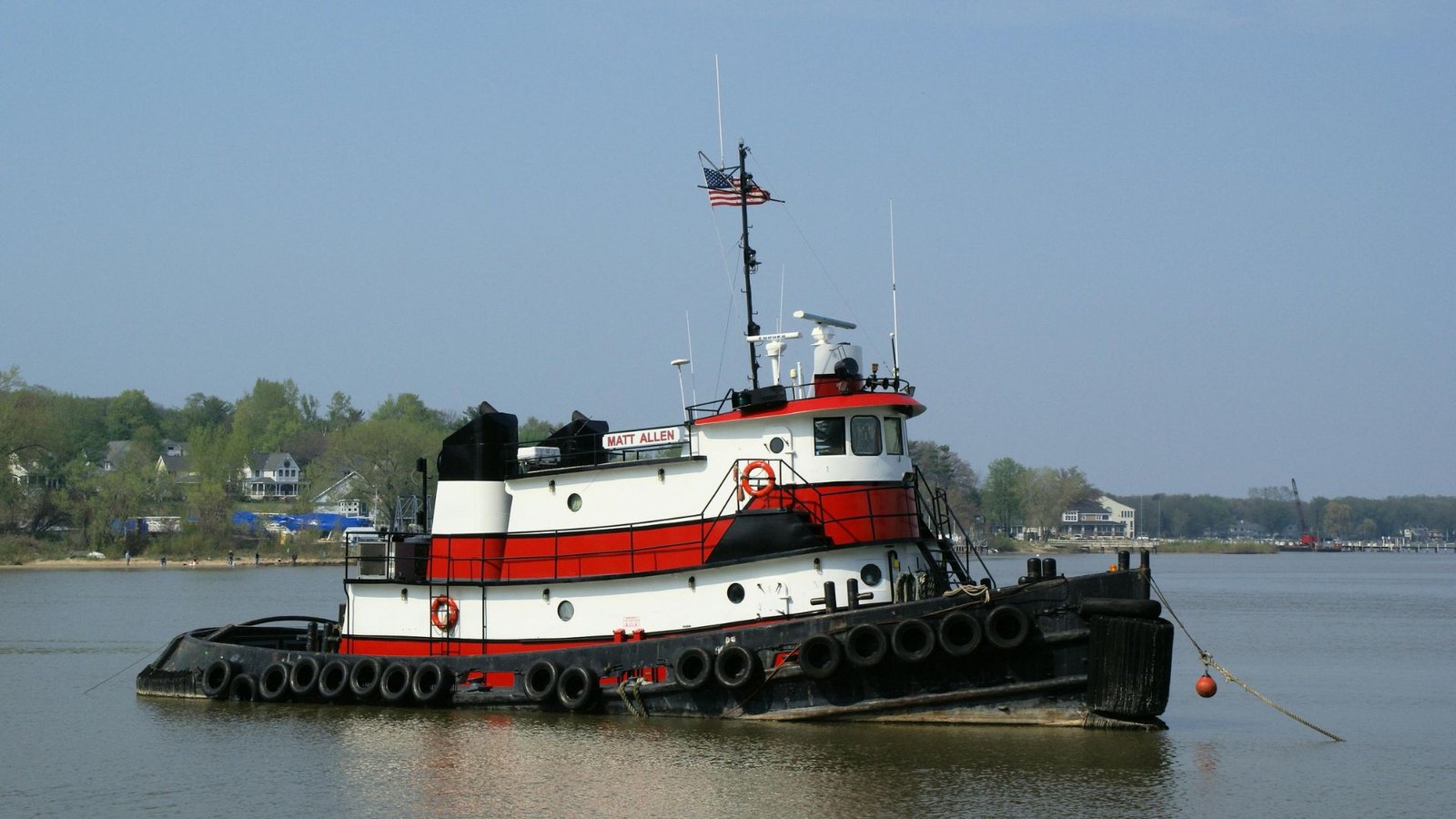Tugboats: Strong Helpers on the Water

When most people think of ships, they picture massive cargo vessels, luxurious cruise liners, or speedy navy destroyers. But there's another type of boat that doesn't get as much attention, even though it plays a crucial role in keeping things moving on the water—tugboats. These small but powerful boats help guide, push, and tow larger ships through tight spaces, busy ports, and unpredictable waters. Many large vessels wouldn't have safely made it to their destinations without them.
The Hidden Strength of Tugboats
At first glance, tugboats may not look like much. They're compact, sturdy, and built for work rather than style. But don't let their size fool you—these boats pack incredible power. Some modern tugboats have engines that generate over 6,000 horsepower, allowing them to move ships that weigh hundreds of thousands of tons.
Tugboats use special towing equipment, strong ropes, and powerful winches to pull or push massive vessels. They also have advanced steering systems that let them move in all directions, even sideways. This is essential when maneuvering giant ships through narrow ports or canals.
A Day in the Life of a Tugboat Crew
Life aboard a tugboat isn't for the faint of heart. The work demands quick thinking, teamwork, and a deep understanding of the water. Crews often work long shifts, sometimes staying on board for weeks.
John, a tugboat captain with over 20 years of experience, shares what it's like to be on duty. "You never know what each day will bring. One moment, you're guiding a container ship through a crowded port, and the next, you're racing out to assist a tanker caught in rough waters."
Despite the harsh conditions, tugboat crews take pride in their work. They know that many shipping operations would come to a halt without them.
Tugboats in Action: Real-Life Examples
The Suez Canal Blockage
In 2021, the world watched as the massive Ever Given container ship got stuck in the Suez Canal, bringing global shipping to a standstill. It was tugboats, along with dredging crews, that worked around the clock to free the vessel. Their strength and precision helped reopen one of the world's most important trade routes.
Saving a Cruise Ship
In 2019, a cruise ship carrying thousands of passengers lost power in rough seas off the coast of Norway. As waves battered the boat, tugboats rushed to the scene to tow it to safety. Thanks to their quick response, disaster was avoided.
The Different Types of Tugboats
Tugboats come in different shapes and sizes, depending on their job. Here are some of the most common types:
Harbor Tugs
These are the most common and are mainly used in ports to help large ships dock and depart. They have powerful engines and are highly maneuverable.
Ocean-Going Tugs
Designed for open-water towing, these tugboats assist ships over long distances. They are often used to tow disabled ships or floating structures.
Icebreaking Tugs
Built for extreme cold, these tugboats can break through ice to clear paths for other vessels. They play a crucial role in Arctic and Antarctic waters.
Why Tugboats Are More Important Than Ever

With global trade and ships growing, the need for tugboats has never been greater. Modern ports handle record numbers of cargo ships, and many waterways are more crowded than ever. Without tugboats, the risk of accidents, delays, and costly mishaps would rise dramatically.
Tugboats also play a key role in protecting the environment. When oil tankers or cargo ships get into trouble, tugboats are often the first to respond, preventing spills and damage to marine life.
Thinking About a Career on a Tugboat?
If you love the water and don't mind hard work, a career in a tugboat could be a great fit. Jobs range from deckhands to engineers to captains, and the industry is always looking for skilled workers.
Tugboat crews need strong teamwork skills, a good understanding of mechanics, and the ability to work in harsh conditions. But for those who enjoy the challenge, it can be a rewarding career with great pay and job security.
Tugboats may not always be in the spotlight, but they are the unsung heroes of the maritime world. Whether they're-they're guiding massive ships through tight ports, pulling stranded vessels to safety, or keeping trade routes open, these small but mighty boats make a considerable impact. Next time you see a giant ship coming into a harbor, take a moment to appreciate the tugboats working hard behind the scenes to make it all happen.
FAQs
1. What is the main purpose of a tugboat?
Tugboats are designed to assist larger ships by pushing, pulling, or guiding them through harbors, narrow waterways, and open seas. They are essential for maneuvering vessels in tight spaces and providing emergency towing services.
2. How powerful are tugboats?
Despite their small size, tugboats are incredibly powerful. Some have engines that generate over 6,000 horsepower, allowing them to move massive cargo ships, oil tankers, and cruise liners with ease.
3. How do tugboats move sideways?
Many modern tugboats are equipped with azimuth thrusters, which are propellers that can rotate 360 degrees. This allows them to move in any direction, including sideways, making them highly maneuverable.
4. Are tugboats used for rescue operations?
Yes, tugboats often play a key role in maritime rescues. They tow stranded or disabled ships, prevent oil spills by moving damaged tankers, and assist in emergencies like fires or collisions at sea.
5. How do you become a tugboat captain?
Becoming a tugboat captain requires extensive maritime experience, training, and licensing. Many start as deckhands, then work their way up by gaining certifications and on-the-job experience.
- Educação
- Course
- Books
- Drawing
- Seção
- Film
- Fitness
- Food
- Jogos
- Gardening
- Health
- Início
- Literature
- Music
- Networking
- Outro
- Programming
- Religion
- Shopping
- Sports
- Curriculm
- Wellness


